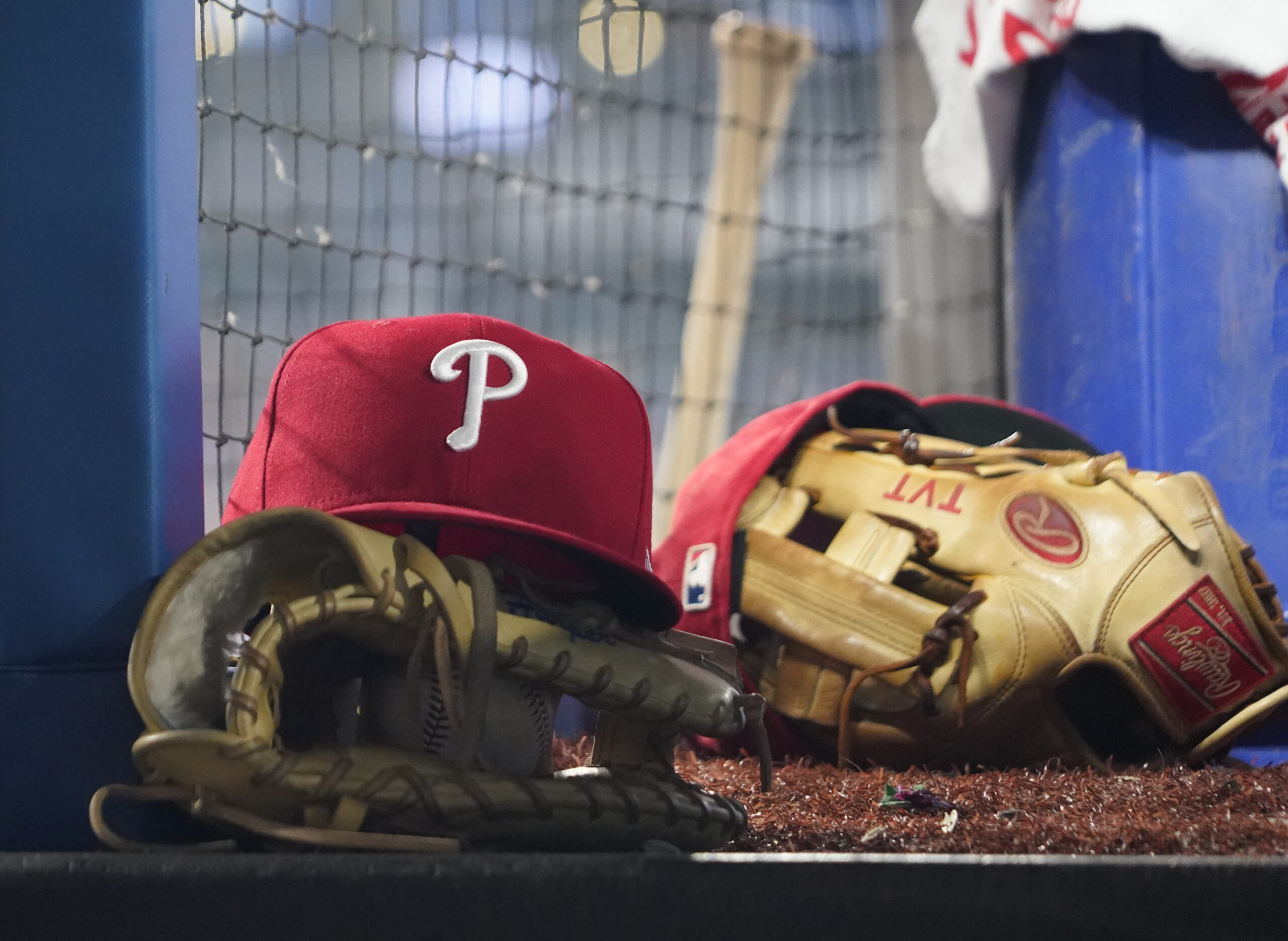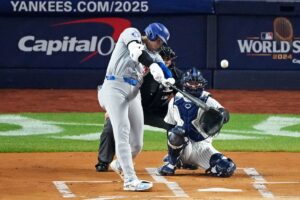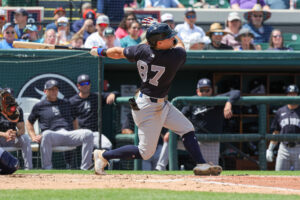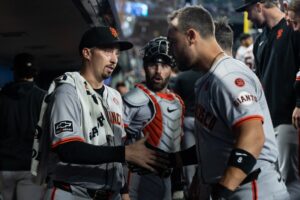On Father’s Day in 1964, Philadelphia Phillies pitcher Jim Bunning threw a perfect game against the New York Mets. It was the first game of a doubleheader at the Mets’ new home, Shea Stadium.
60 Years Ago, Phillies Jim Bunning Tossed Perfect Game On Father’s Day
The 1964 Mets weren’t exactly a powerhouse. They were only marginally better than the has-beens, “never-was,” and castoffs that comprised the 1962 team that finished 40-120. These Mets finished 53-109 and near the bottom of the National League in most important batting and pitching categories. Meanwhile, Bunning was a future Hall of Fame pitcher who entered the game with a 6-2 record for the first-place Phillies.
As for the Mets’ lineup on this day, all one needs to know is that their cleanup hitter was Joe Christopher. Their first three hitters were Jim Hickman, Ron Hunt, and Ed Kranepool. All were solid major leaguers in their own right but wouldn’t be mistaken for the current Dodgers opening trio of Mookie Betts, Shohei Ohtani, and Freddie Freeman. The Mets’ starting pitcher, Tracy Stallard, had a higher batting average (.219) than their third baseman, Amado Samuel (.178). Rounding out this “Murderer’s Row” were Jesse Gonder, Hawk Taylor, and Charley Smith.
Perfect Game On Father’s Day For Jim Bunning
Even so, Bunning was sharp. The Mets hit just four balls into the outfield. Bunning struck out 10 and went to a three-ball count just twice. His manager, Gene Mauch, sensed early that the 32-year-old right-hander was on the verge of something special. Bunning began to think about it after five innings. He didn’t believe in jinxes, either. While his teammates tried to stay away from him in the dugout, Bunning was bouncing around despite the 91-degree heat, urging his teammates and reminding them how many outs to go to wrap up his perfect game.
It was nothing new to the veteran. 1958, as a Detroit Tiger, he twirled a no-hitter against the Boston Red Sox. He came close to a second no-hitter in 1964 against the Houston Colt .45s at Colt Stadium. He settled for a one-hitter when his left fielder, Wes Covington, played Mike White’s soft fly ball into a single.
One Close Call
On this Father’s Day, Bunning had just a few scares en route to his perfect game. Hunt and pinch-hitter George Altman hit line drives that curved foul down the right-field line. In the fifth inning, Gonder smashed a liner toward what today’s verbose color analysts call the “four hole.” It looked like a sure hit as soon as it left the bat. However, Phillies second baseman Tony Taylor dove and lunged for the ball, knocking it down. Taylor scrambled to his feet, found the ball, and threw Gonder out on a close play.
In the bottom of the ninth, the crowd of 32,026 sensed they were about to witness history and cheered for Bunning. There hadn’t been a perfect game since the New York Yankees’ Don Larsen accomplished the feat in the 1956 World Series against the Brooklyn Dodgers. The previous regular season perfect game was pitched by Charlie Robertson in 1922 for the Chicago White Sox over Detroit.
Bunning’s wife, Mary, and their 11-year-old daughter, Barbara, were in the stands. Back in their Cherry Hill, NJ home, their six other children watched the game on TV with babysitter Mary Fran Hoffman, 16, of Covington, KY. Why they had to go to Kentucky to get a babysitter shall remain a mystery.
Meanwhile, protecting a 6-0 lead and using his three-quarter whip-like motion, Bunning got Smith on a foul pop fly and struck out Altman. All that stood between Bunning and baseball history was rookie pinch-hitter John Stephenson, who was batting .074. Bunning struck him out on a curveball. He became the first pitcher in the modern era to throw no-hitters in both leagues.
Fastballs and Sliders – Or Maybe Curveballs?
It took the future United States Senator from Kentucky just 86 pitches to complete his masterpiece. After the game, Bunning told the Associated Press that he had his fastball and slider working that day. His catcher, Gus Triandos, told United Press International that Bunning achieved his perfect game by throwing nothing but curveballs on that Father’s Day. One supposes that as long as one of them knew what was going on, that was good enough.
Money (That’s What I Want)
Producer Joe Gallagher of New York’s WOR-TV stopped Bunning as he left the field and asked him to appear on Kiner’s Korner, a postgame interview show by Ralph Kiner. Bunning agreed only after Gallagher confirmed that he’d be paid for the interview.
Bunning also received a request to appear on that evening’s The Ed Sullivan Show, a popular variety show that was a TV staple from 1948-71. A former sportswriter legendary for his vindictiveness, stiff manner, and occasional gaffes, Sullivan was an unlikely host. He once introduced the Three Stooges as the Three Ritz Brothers. He liked baseball but despised the long-haired rock-and-roll bands he introduced to American audiences. Sullivan frequently featured short interview segments with athletes who happened to be in New York, where the show was taped.
Bunning refused to appear without a $1,000 appearance fee, to which Sullivan’s people readily agreed. Bunning sold himself short. Sullivan’s show paid as much as $10,000 for individual performances at the time.
No video evidence exists – or at least none has been made available to the public – but both interviews went well.
The Last Word
With his 1964 Father’s Day perfect game, Bunning unwittingly started a trend. After 42 years between perfect games, there have been 17 in the 60 years since, including one on Mother’s Day. Major League Baseball recognizes 24 perfect games, beginning with Lee Richmond’s perfecto in 1880. However, MLB doesn’t recognize the first perfect game in baseball history. That was by Pud Galvin of the St. Louis Red Stockings in 1876. The 1875 Red Stockings are recognized as a professional team because they competed in the National Association. Not so for1876, when they were an unaffiliated team, despite having many of the same players from the previous year and facing the same type of competition.
Main Photo Credits: John E. Sokolowski-USA TODAY Sports






